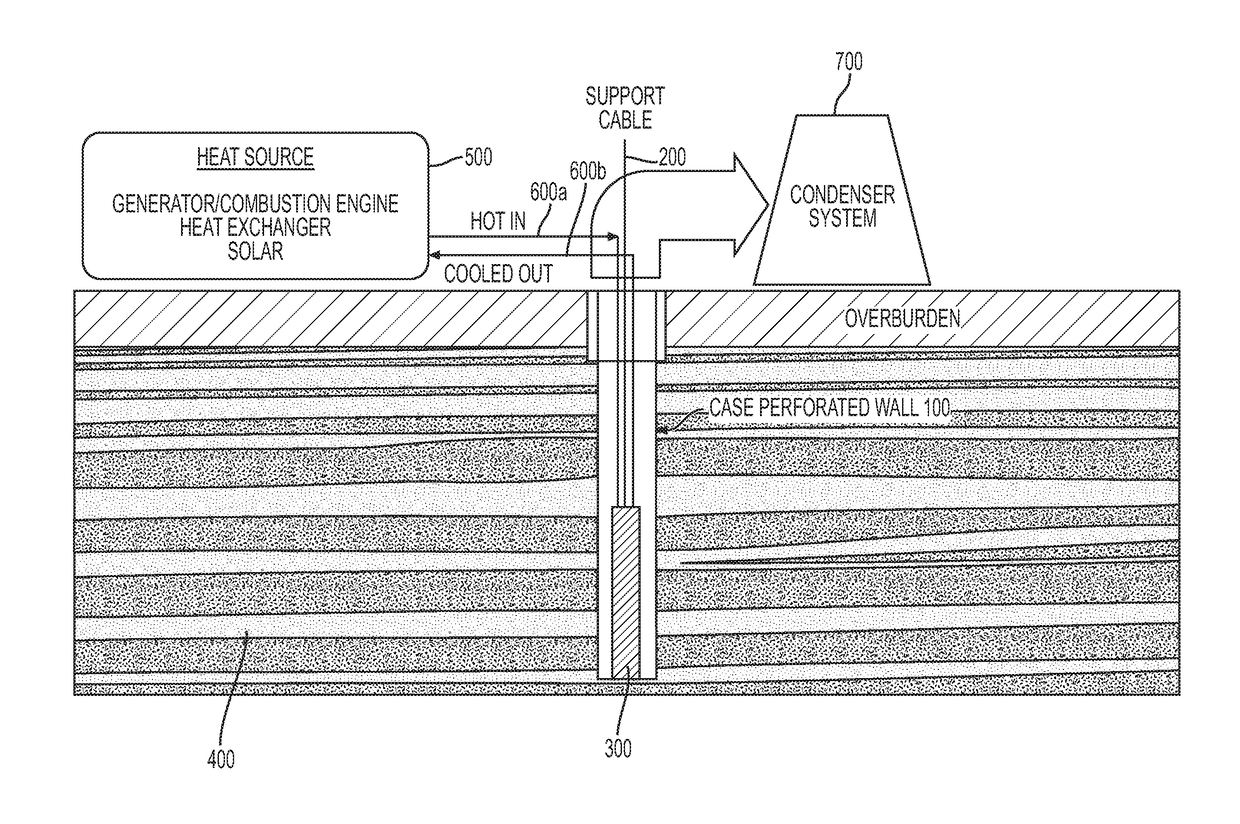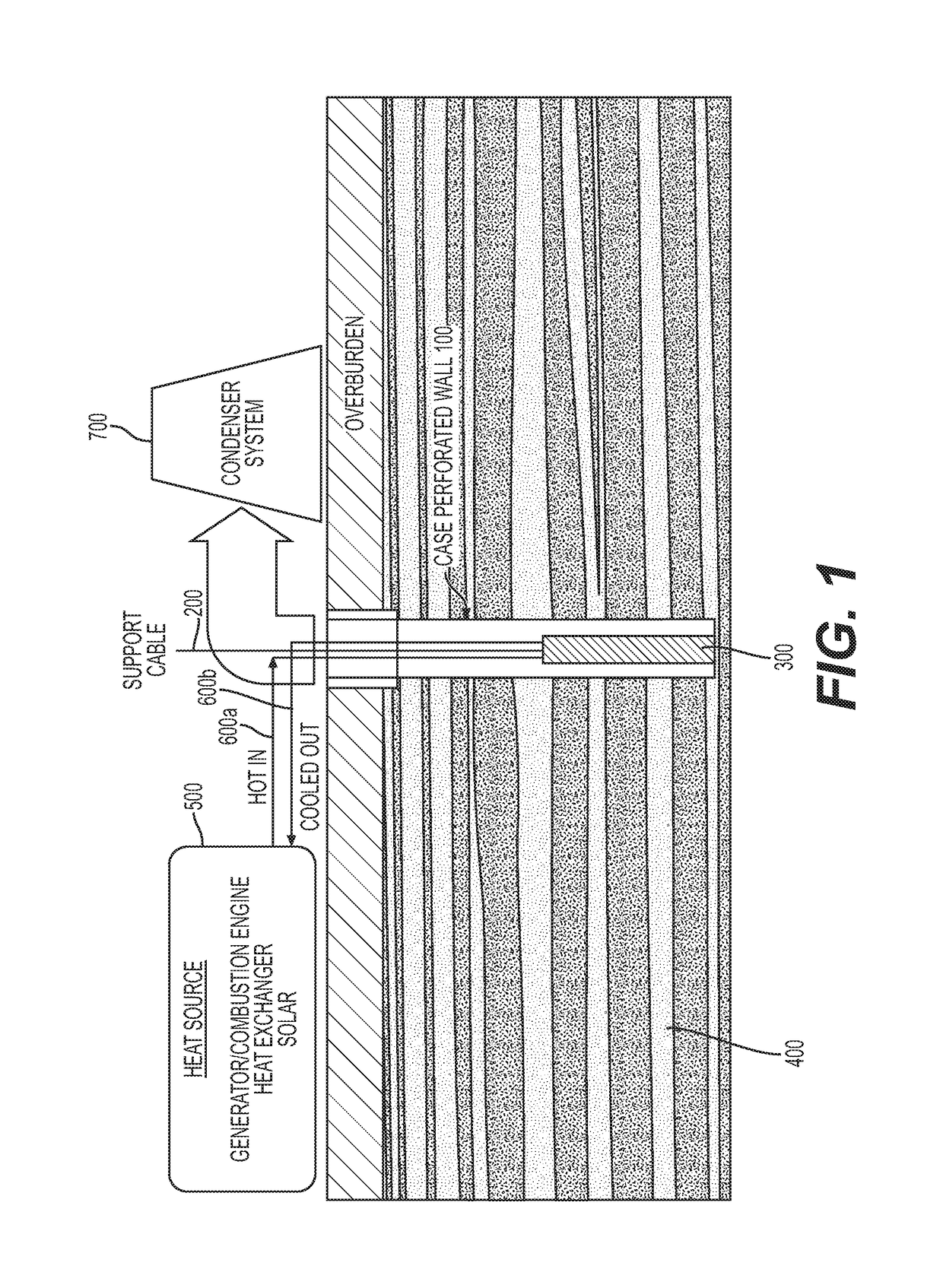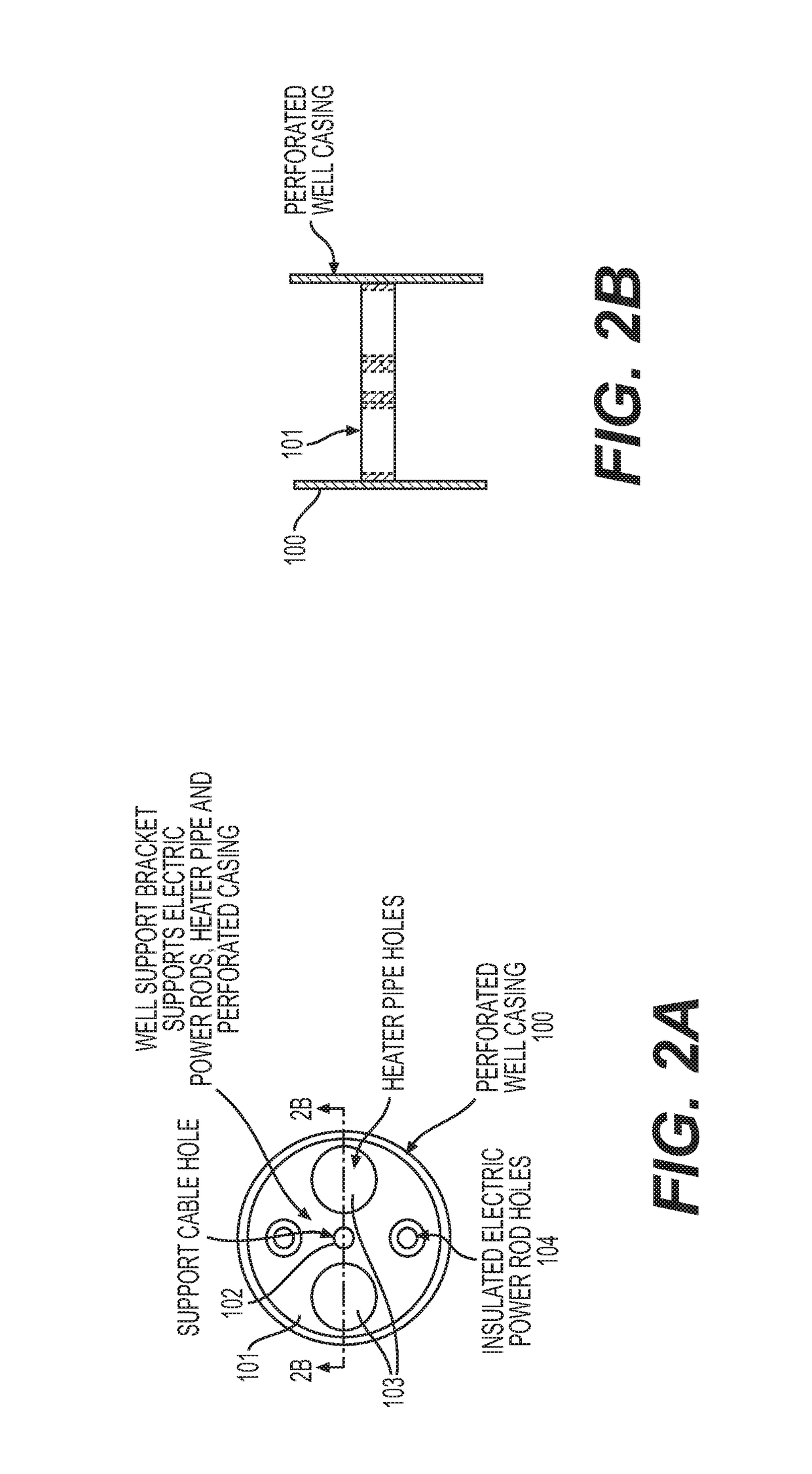Systems and methods for the in situ recovery of hydrocarbonaceous products from oil shale and/or oil sands
a technology of hydrocarbonaceous products and in situ recovery, which is applied in the direction of coal gasification, borehole/well accessories, drilling pipes, etc., can solve the problems of inconvenient operation, increased cost, and high cost of above-ground processing, so as to avoid groundwater contamination
- Summary
- Abstract
- Description
- Claims
- Application Information
AI Technical Summary
Benefits of technology
Problems solved by technology
Method used
Image
Examples
Embodiment Construction
[0019]Referring to FIG. 1, the present invention is directed to an apparatus and method of recovering hydrocarbonaceous products such as gas from underground oil shale rock. Oil shale formations are typically found at depths of between 100 to 3000 feet below the surface. Generally, as shown in the embodiment of FIG. 1, a borehole is drilled through the “overburden” or surface material and into the kerogen-containing oil shale formation. In the present invention, the width of the borehole is typically less than nine 9 inches in diameter. Once the borehole is drilled, the hole is lined with a perforated casing 100 typically made of stainless steel, such as 316L stainless steel, although other materials of sufficient strength and heat transfer properties may be used. The perforated casing can be installed along with the radiator 300 and is lowered and suspended by a cable 200, also typically made of 316L stainless steel, inside the casing to its desired depth depending on the location ...
PUM
 Login to View More
Login to View More Abstract
Description
Claims
Application Information
 Login to View More
Login to View More - R&D
- Intellectual Property
- Life Sciences
- Materials
- Tech Scout
- Unparalleled Data Quality
- Higher Quality Content
- 60% Fewer Hallucinations
Browse by: Latest US Patents, China's latest patents, Technical Efficacy Thesaurus, Application Domain, Technology Topic, Popular Technical Reports.
© 2025 PatSnap. All rights reserved.Legal|Privacy policy|Modern Slavery Act Transparency Statement|Sitemap|About US| Contact US: help@patsnap.com



